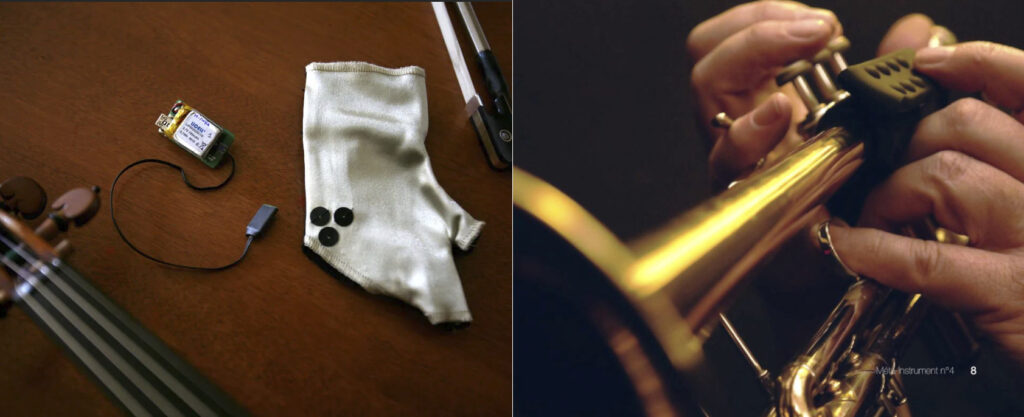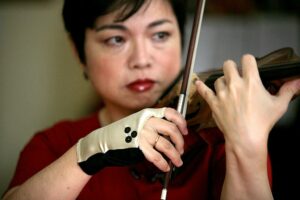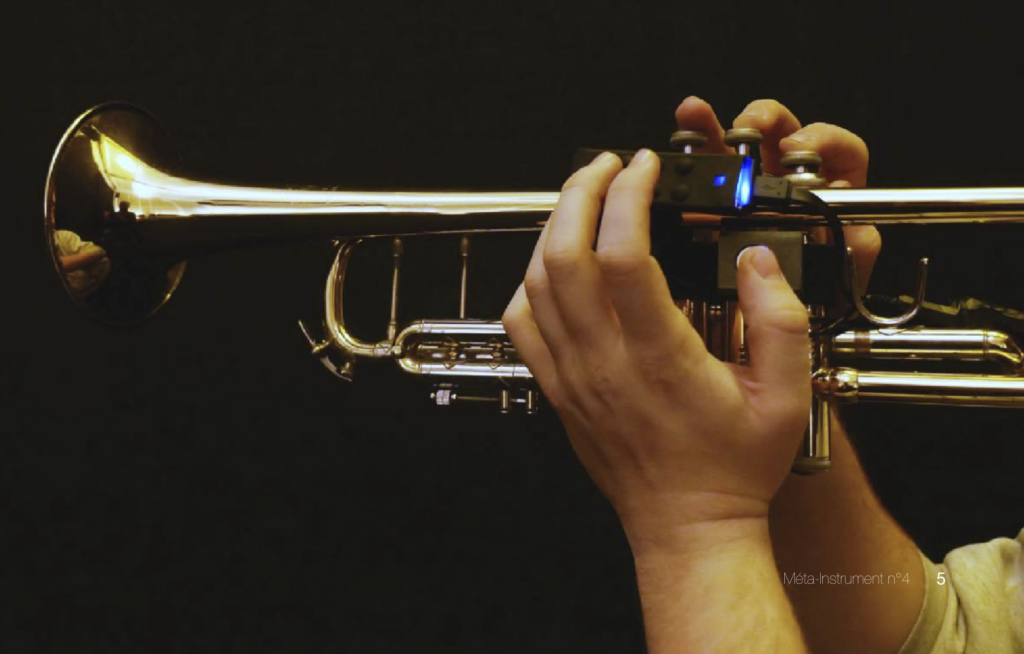
Let us now return to the gesture, and more specifically to the hand gesture that a violin player makes with his bow. Unlike the sensors attached to the instrument, if we want to capture the hand gesture, we must place the sensor not on the instrument, but on the performer's hand itself.
This is indeed the idea retained by that Japanese violinist Mari Kimura.
112 / 5 000
After her time at IRCAM in 2010, she integrated the MO technology, which stands for Modular Musical Objects.
Initially, the objects, which recognize position or acceleration, are placed on the bow, but Mari Kimura has the idea of integrating them into a glove. This glove is then used with the hand holding the bow to trigger events or modulate sound parameters.

But the musician who has free rein to manage the gestures without altering his playing is the singer. This is what the English artist Imogen Heap offers, among many other solutions, within her company MiMu Gloves. Since the 2010s, MiMu Gloves has been manufacturing gloves equipped with sensors, and the hand movements are tracked by the computer. The singer's hand gestures can thus be used to modulate the sound of his or her own voice.
Continuing from the detachment of the sensors from the instrument first to the body of the performer, we arrive at the total separation of the sensors.
Subsequently, the miniaturization of these independent sensors allows them to be placed on almost any instrument.
This is exactly what happens with Mari Kimura's project, which since 2015 has been offering a small object called MUGIC. MUGIC contains a number of motion sensors. It therefore becomes an independent object that can be used freely in your creations with various instruments and, among other things, with the voice.
But for musicians whose hands cannot easily separate from their instruments, the same principle must be provided, but with buttons that the musician can press to trigger changes in the sound of their instrument.
In 2017, Puce-Muse and Serge de Laubier introduce the Meta-Instrument 4, which includes the Meta-Touch.
The Meta-Touch is a small box with 8 buttons. It can be placed on a trumpet, for example, and thus add new controls for the musician.

Finally, we must not forget the pedalboards, which we discussed earlier, which represent a perfect illustration of the separation of the control of the instrument – with its advantages and disadvantages.
As with playing an acoustic instrument, the musician must be able to understand the relationship between the gesture and the sound produced. For this, it is important that the performer themself plays the sound transformations. This is indeed the starting point of Sampo: the performer must be able to control the entire performance and have immediate auditory feedback to be able to bring their own interpretation of the work.